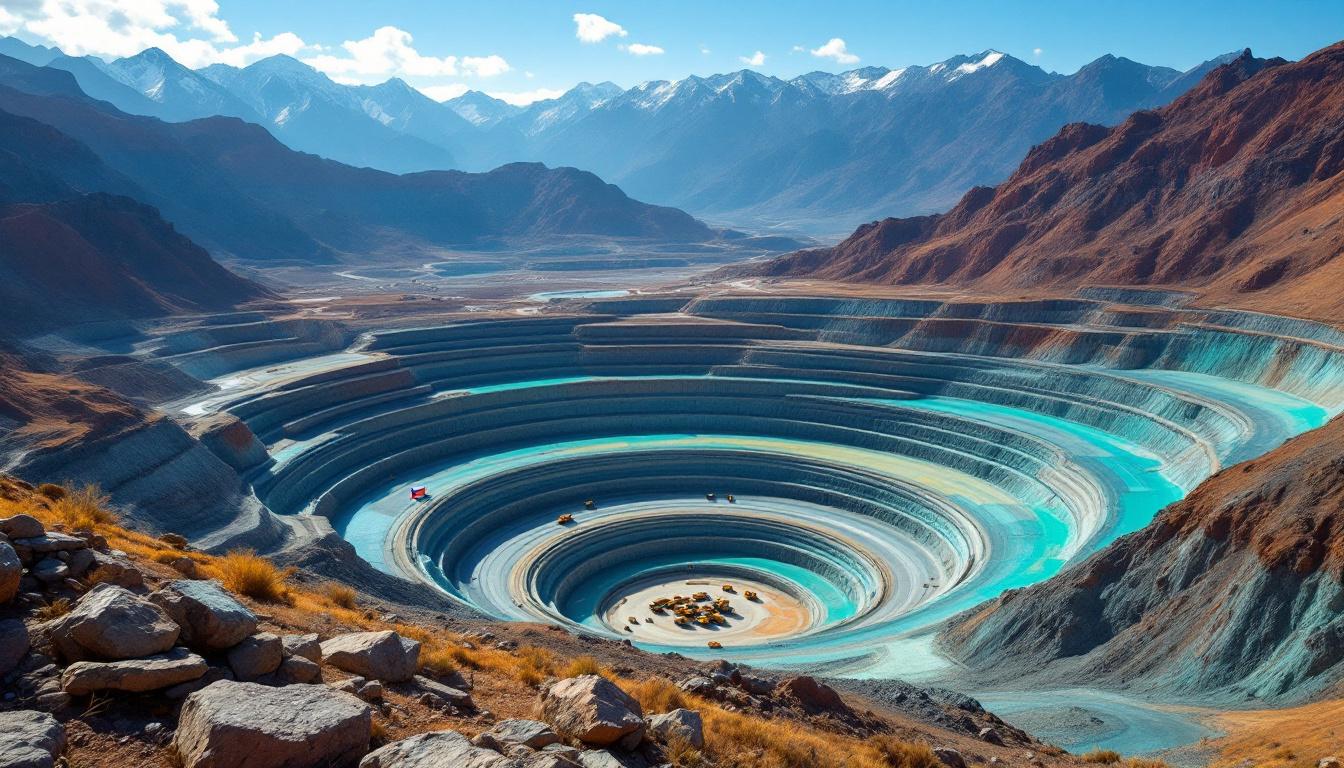How Rio Tinto Bounced Back Following Weather Impacts: A Recovery Strategy
Rio Tinto demonstrated remarkable resilience in early 2025 by recovering from significant weather-related disruptions while advancing strategic growth initiatives. Despite Tropical Cyclones Zelia and Sean disrupting Pilbara iron ore operations, the company maintained its full-year shipment guidance through rapid mitigation plans, operational adjustments, and supply chain optimization. Key achievements included record bauxite and copper production, the launch of the Western Range iron ore project, and a $2.5 billion expansion of its Rincon Lithium Expansion. CEO Jakob Stausholm emphasized the company's commitment to diversification and shareholder value, underscoring Rio Tinto's ability to balance recovery with long-term growth in volatile markets.
What Weather Events Impacted Rio Tinto's Operations?
Key Statistics & Data
-
Tropical Cyclone Zelia (February 2025): Forced temporary shutdowns at Dampier and Cape Lambert Ports, critical hubs for iron ore exports.
-
Tropical Cyclone Sean (January 2025): Caused a 17% quarter-over-quarter decline in iron ore shipments, reducing Q1 2025 output to 70.7 million tonnes.
-
Combined Impact: Resulted in the loss of approximately 10–15% of projected quarterly shipments, though Rio Tinto recovered half through mitigation efforts.
Technical Details
Cyclones disrupted rail networks and port operations, which handle over 330 million tonnes annually from the Pilbara region. Recovery involved debris clearance, infrastructure repairs, and rescheduling shipments to minimize backlog.
The cyclone impact was magnified by the concentration of infrastructure in coastal areas, with wind speeds exceeding 160 km/h near critical loading facilities. Historical data shows weather-related disruptions cost the company approximately $80-100 million per day during peak disruption periods.
How Did Rio Tinto Implement Its Recovery Strategy?
Key Statistics & Data
-
Operational Resilience: Maintained 2025 Pilbara guidance of 323–338 million tonnes despite Q1 challenges.
-
Resource Reallocation: Diverted personnel and equipment to high-priority sites like Western Range, accelerating its first production milestone.
Expert Quotes & Insights
Jakob Stausholm noted, "Our teams executed recovery plans with precision, ensuring minimal long-term disruption to our supply chain."
Technical Details
The company leveraged real-time data analytics to reroute rail shipments and optimize port throughput. Advanced weather modeling helped pre-position recovery assets in cyclone-prone areas.
Rio Tinto implemented its proprietary "Rapid Response Protocol," which includes predetermined action plans for various disaster scenarios. This allowed for the swift deployment of specialized crews and equipment within 72 hours of weather clearance, a 40% improvement from previous recovery timelines.
What Were Rio Tinto's Q1 2025 Production Results?
Key Statistics & Data
-
Iron Ore: 70.7 million tonnes shipped, aligning with the lower end of annual guidance.
-
Bauxite: Record Q1 production of 15 million tonnes, driven by the Amrun mine operating at 112% of nameplate capacity.
-
Copper: Oyu Tolgoi achieved 65,000 tonnes, a 12% increase year-over-year.
Supporting Examples
Amrun's performance was attributed to the "safe production system," which improved plant availability by 18% through predictive maintenance.
The company's integrated operations center in Perth played a crucial role in optimizing production schedules, using AI-driven algorithms to identify efficiency opportunities across the entire value chain, resulting in a 7% increase in throughput despite reduced operational hours.
How Did Rio Tinto's Global Operations Perform?
Pilbara Iron Ore Operations
-
Recovery Timeline: Operations resumed within 10 days post-cyclones, avoiding prolonged downtime.
-
Western Range: First production achieved in March 2025, adding 25 million tonnes annually at full capacity.
Global Copper Operations
- Oyu Tolgoi Underground Mine: Ramp-up progressing at 8% quarterly growth, targeting 500,000 tonnes annually by 2026.
The Oyu Tolgoi underground expansion represents one of the world's largest copper development projects, with ore grades averaging 1.8% copper equivalent—significantly higher than the global copper market growth average of 0.6%—making it a cornerstone of Rio Tinto's copper strategy despite its remote location and complex logistics.
Queensland Bauxite Operations
- Amrun Mine: Sustained 10% above nameplate capacity for six consecutive months.
The Amrun operation's success stems from its innovative conveyor system, which reduces both costs and environmental impact by eliminating the need for trucking over long distances. This system has decreased transportation costs by approximately 22% while reducing carbon emissions by an estimated 35,000 tonnes annually.
What Growth Projects Is Rio Tinto Advancing?
Key Statistics & Data
-
Simandou (Guinea): High-grade iron ore project (2.4 billion tonnes reserves) on track for 2028 production.
-
Rincon Lithium (Argentina): $2.5 billion expansion to increase output to 50,000 tonnes annually by 2027.
-
Arcadium Lithium Acquisition: $10.5 billion investment solidifying Rio Tinto's position in the lithium market.
Technical Details
Simandou's development includes a 670 km railway and deepwater port, requiring collaboration with the Guinean government and Chinalco.
The Simandou project's significance lies in its exceptional ore grade, averaging 65.5% Fe, substantially higher than the 62% benchmark commonly traded. This premium quality will allow Rio Tinto to command price premiums while simultaneously reducing emissions in the steelmaking process due to less energy required for processing.
What Is Rio Tinto's Strategic Outlook?
Expert Quotes & Insights
Jakob Stausholm stated, "We are building a more diversified portfolio to thrive in the energy transition, balancing iron ore with copper and lithium."
Quantitative Elements
-
Diversification Target: Critical minerals to represent 30% of revenue by 2030, up from 15% in 2024.
-
Shareholder Returns: Maintained dividend yield of 5.2% despite cyclone impacts.
Rio Tinto's pivot toward battery metals reflects a broader strategic repositioning to capitalize on projected demand growth. Industry analysts forecast lithium demand to triple by 2030, while copper demand is expected to exceed supply by approximately 8 million tonnes annually by 2032. This strategic shift represents the most significant portfolio transformation in the company's 150-year history.
FAQ About Rio Tinto's Recovery
How much did weather events impact Rio Tinto's iron ore shipments?
Rio Tinto experienced a 17% decrease in iron ore shipments compared to the previous quarter, with Q1 2025 shipments at 70.7 million tonnes, placing them at the lower end of their annual guidance range.
What measures did Rio Tinto take to recover from the cyclone impacts?
The company implemented mitigation plans that successfully recovered approximately half of the lost shipments, while maintaining their full-year guidance targets through operational adjustments and supply chain optimization.
Which Rio Tinto operations performed well despite the weather challenges?
The Oyu Tolgoi copper mine in Mongolia achieved record production of 65,000 tonnes, while the company's bauxite operations set a first-quarter production record of 15 million tonnes, with the Amrun mine in Queensland operating above nameplate capacity.
What major growth projects is Rio Tinto currently advancing?
Rio Tinto is progressing the Western Range iron ore project in Australia, the Simandou high-grade iron ore project in Guinea, and a $2.5 billion expansion of the Rincon lithium project in Argentina following their $10.5 billion acquisition of Arcadium Lithium.
How is Rio Tinto diversifying its business portfolio?
The company is strategically expanding beyond its traditional iron ore focus by establishing a world-class lithium business through acquisitions and project development, while continuing to grow its copper operations through the Oyu Tolgoi underground mine ramp-up.
Conclusion
Rio Tinto's 2025 recovery underscores its operational agility and strategic foresight. By integrating advanced technologies, diversifying into critical minerals, and maintaining stakeholder confidence, the company is positioned to navigate both climatic and market uncertainties. Future success will hinge on sustained innovation, geopolitical risk management, and transparent sustainability practices.
The company's ability to maintain production guidance despite significant weather disruptions demonstrates the effectiveness of its disaster recovery protocols and the resilience of its integrated operations. As climate change increases the frequency and severity of extreme weather events, Rio Tinto's experience provides valuable insights for the entire mining sector on balancing short-term recovery with long-term strategic goals through digital transformation in mining and innovative mining investment strategies. Additionally, their focus on revolutionizing lithium production represents a pivotal component of their future-facing commodity strategy.
Looking for the Next Major Mineral Discovery?
Discover significant ASX mineral announcements in real-time with Discovery Alert's proprietary Discovery IQ model, transforming complex data into actionable investment insights. Explore why historic discoveries generate substantial returns by visiting Discovery Alert's dedicated discoveries page and begin your 30-day free trial to position yourself ahead of the market.




